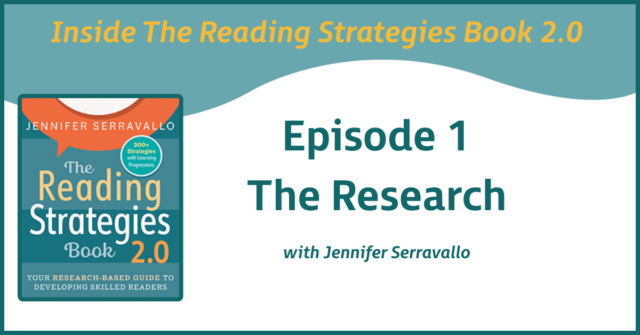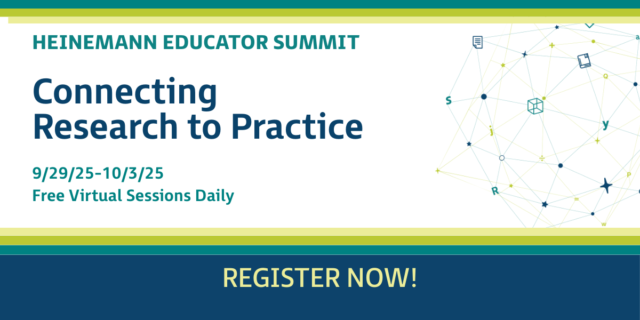
Simple Starts: Making the Move to a Reader-Centered Classroom is out now. Heinemann’s newest offering is author Kari Yates’ getting-started guide to creating the reading classroom of your—and your students’—dreams. In today’s post, Kari compares reader-centered classrooms to other-centered classrooms and warns that making the move from one to the other is a process, not an event.
By Kari Yates
In reader-centered classrooms, we commit to putting readers first.
Sounds simple enough, right?
But sometimes external pressures, tight schedules, past practices, and uncertainty can get in the way, leading us to other-centered classrooms despite our best intentions.
—
Sometimes our classrooms become curriculum-centered. We follow the script. We cover the content and the standards but pay little attention to how our students respond.
In reader-centered classrooms we find the courage to follow our students’ leads. We are clear on the learning outcomes we must work to achieve, but we watch and listen carefully as our students reveal their strengths, interests, and needs. We know them better than any outside “expert” and we’re not scared to say so. We adapt instruction in ways only a teacher who knows them well can.
—
Sometimes our classrooms become teacher-centered. We do most of the talking and decision-making. We work harder than anyone else in the room, leaving us frazzled and focused on management.
In reader-centered classrooms students are empowered as decision-makers. We have simple, predictable routines. Students make choices within this structure. They do most of the talking and decision-making. We act as coaches, providing varying levels of support, based on what they reveal is needed.
—
Sometimes our classrooms become activity-centered. We let projects, products, and proof take center stage. These tasks (worksheets, workbooks, packets, step-by-step projects, cut-and-paste, etc.) can take our kids away from the real business of reading and leave us feeling exhausted with the constant cycle of creating, collecting, and correcting stuff.
In reader-centered classrooms students spend most of their time building authentic reading lives. Their primary activities are reading, talking about reading with other readers, and writing about reading. We spend less time wondering, “What could I have them do?” and more time considering, “What do these readers need next?” Time for independent reading is placed on the schedule first, not last.
—
Sometimes our classrooms become reward-centered. We focus on points and prizes as a means of “getting kids to read”. We confuse our kids with the absurd notion that these carrots and contests are real reasons for reading.
In reader-centered classrooms readers celebrate books and reading. Kids never choose a book based on how many points it can help them earn or what they will “get” for reading it. Instead, readers learn how to find books that they can’t wait to start reading and don’t want to put down. They are motivated by access to amazing books and the power of choice. Joyful engagement is both the goal and the reward.
—
Sometimes our classrooms become text-centered. We choose and control most of the texts our students read, and even the pace of their reading. We’ve come to believe there are certain texts that everyone must read or that we must be use to teach particular skills or strategies.
In reader-centered classrooms, we dare to let students choose most of what they read. We know that when readers are motivated and engaged, most any text can become a powerful tool for learning. Instead of choosing for them, we empower them to pursue their own interests, passions and inquiries as readers. We’re building their skills for a lifetime—not just for a class period.
—
Sometimes our classrooms have become proof-centered. We present ourselves more like the “reading police” than reading partners.
In reader-centered classrooms we work to build a community of readers. We share our joys, wonderings and struggles as readers. We use the power of read aloud, partner conversations, book clubs, book talks, and conferences to build reader-to-reader relationships with and among our students.
Creating a reader-centered classroom is not a goal to be accomplished and checked off your list. It is an ongoing cycle of reflection, planning, and action. Each thoughtful move potentially takes us closer to the classrooms we’ve imagined. Day-by-day. Student-by-student. Move-by-move. The next move on the path to a reader-centered classroom is yours.
What will it be?
♦ ♦ ♦ ♦
 Kari Yates is a program manager for literacy and English learners, helping teachers and administrators plan literacy instruction. Visit her web site and follow her on Twitter at @Kari_Yates.
Kari Yates is a program manager for literacy and English learners, helping teachers and administrators plan literacy instruction. Visit her web site and follow her on Twitter at @Kari_Yates.
Simple Starts: Making the Move to a Reader-Centered Classroom is out now.


